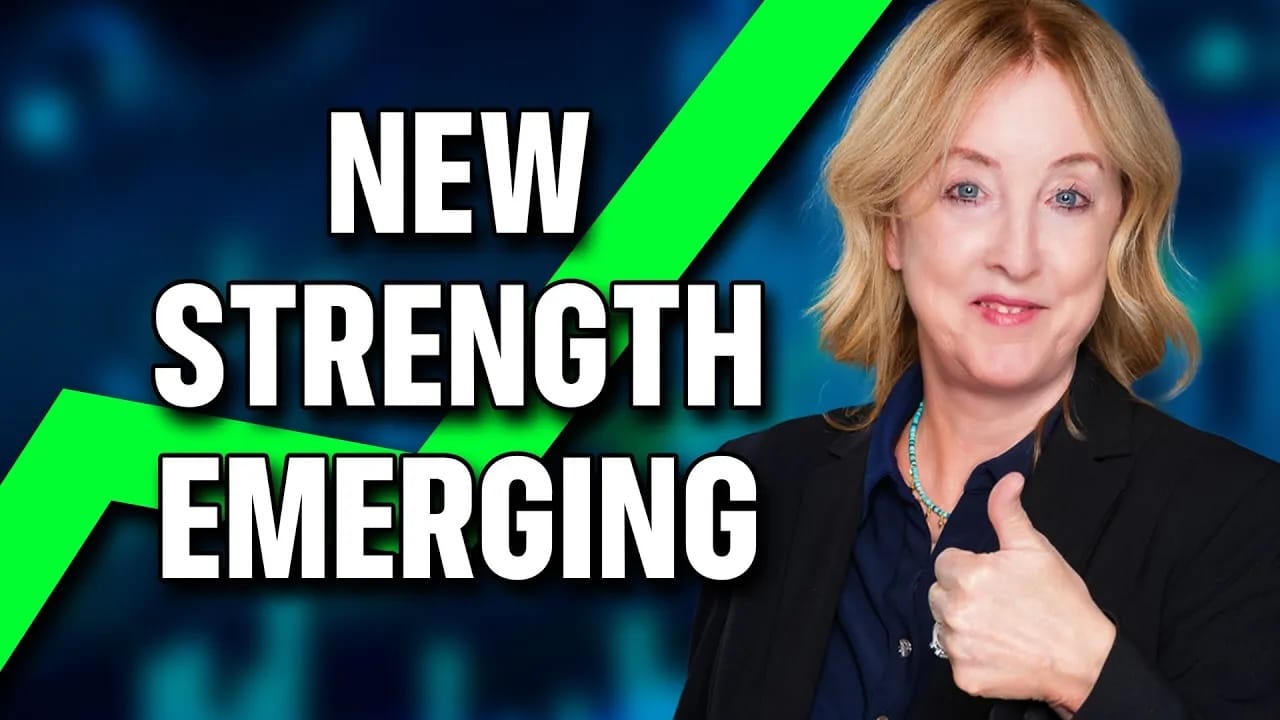S&P 500 SLIPS UNDER 200-DAY AVERAGE -- HOW MUCH OF A PULLBACK IS LIKELY -- WHY WAVES AND SEASONALITY ALLOW FOR ONE MORE UPLEG
S&P BACKS OFF FROM 2004 TRENDLINE... With today's sharp pullback, it's a good idea to see where the pullback is coming from -- and why it shouldn't be too much of a surprise. I showed this chart last Friday to make the point that the S&P 500 had reached a potential resistance line drawn along its 2004 highs. [I also suggested that it would probably be broken between now and yearend, but I'll come back to that]. On Monday, however, I talked about how the presence of overhead resistance barriers (like this trendline) and a short-term overbought condition (daily RSI over 70) indicated the likelihood of a short-term pullback. That's basic chart analysis. A rising market will almost always pull back from a prominent resistance level (whether its a previous peak, a trendline, or a moving average) if it gets there in an overbought condition. So today's pullback is pretty normal. In my Monday piece, I compared a 9-day RSI to the NYSE Index to show that it was overbought (over 70). I mentioned that I had shortened the RSI line from the traditional 14 day span to 9. Chart 1 shows why. The 14 day RSI along the top simply isn't wide enough. At no time in the last several months did it fall under 30 or rise over 70. That means it wasn't very helpful. The 9 day RSI along the bottom moved under 30 (oversold) and over 70 (overbought) six times since March. Those were all short-term turning points. By shorterning the time span to 9 days, the RSI amplitude is widened so that it reaches the extremes that we like to see.

Chart 1
HOW MUCH OF A PULLBACK ... All we know at this point is that the S&P has failed its initial test of an important down trendline. Now the question is how much of a pullback would be normal even in a bullish environment. One of the best ways to determine that is with percentage retracement lines as shown in Chart 2. The green horizontal lines show the 38%, 50%, and 62% retracement levels of the advance from its August low to its September high. The minimum expectation is a pullback to the 38% line near 1105. A 50% drop would put the S&P near 1095. The maximum pullback would be to the 62% line. If it falls much further than that, then something more negative is probably going on. So we'll be watching how far the pullback falls and the type of volume pattern. Heavier downside volume would take on a more negative meaning.

Chart 2
MORE ON MOVING AVERAGES... The S&P 500 fell back under its 200-day moving average today. [It's daily MACD lines also turned down]. That's a negative development. The S&P will now most likely drop to its (blue) 50-day average near 1100 (which would put it between its 38% and 50% retracement lines). That will be another important test of support. About all we can say at this point is that the attempt at another upleg has suffered a setback and is in some doubt. We'll need more information to determine if this is just a temporary setback -- or a major failure. [Keep in mind that we're still in a period of seasonal weakness that usually runs from the second half of September through the first half of October]. Some of our members have asked about the implications of the 50-day line trading under the 200-day line. That's a negative sign -- if it continues. It's happened in the past during market corrections, but usually rights itself. But, for now, it's negative.

Chart 3
WHY ANOTHER UPLEG? ... One of the reasons I've been looking for one more upleg in the market is explained below. It's a combination of waves and seasonality. In my view, the market rally from its October 2002 low to its early 2004 peak took place in three waves -- as shown in Chart 4. Since I believe this to be a "cyclical" bull market, it's normal to expect a five-wave advance. I've been viewing the down "channel" during 2004 as a wave 4 correction. That allows for one more upleg which should at least challenge the early 2004 peak. That would fit into the seasonal pattern for a rising market from November until January. It would also fit the historical pattern for a higher market after a presidential election. Even if that upleg does materialize, I would view it as the fifth and final upleg in this cyclical bull market that started in the fall of 2002. In order for that optimistic fourth quarter view to prevail, however, the S&P would still have to break the downtrend drawn along the 2004 highs. Before that happens, it may have to weather some traditonal October selling. The reason I keep using the term "cyclical" bull market is that I believe the long-term "secular" trend to be sideways at best and possibly even down. That means that my long-term view is not that optimistic. To me, it's a question of whether or not the market has one more upleg left before this bull run is over.

Chart 4










